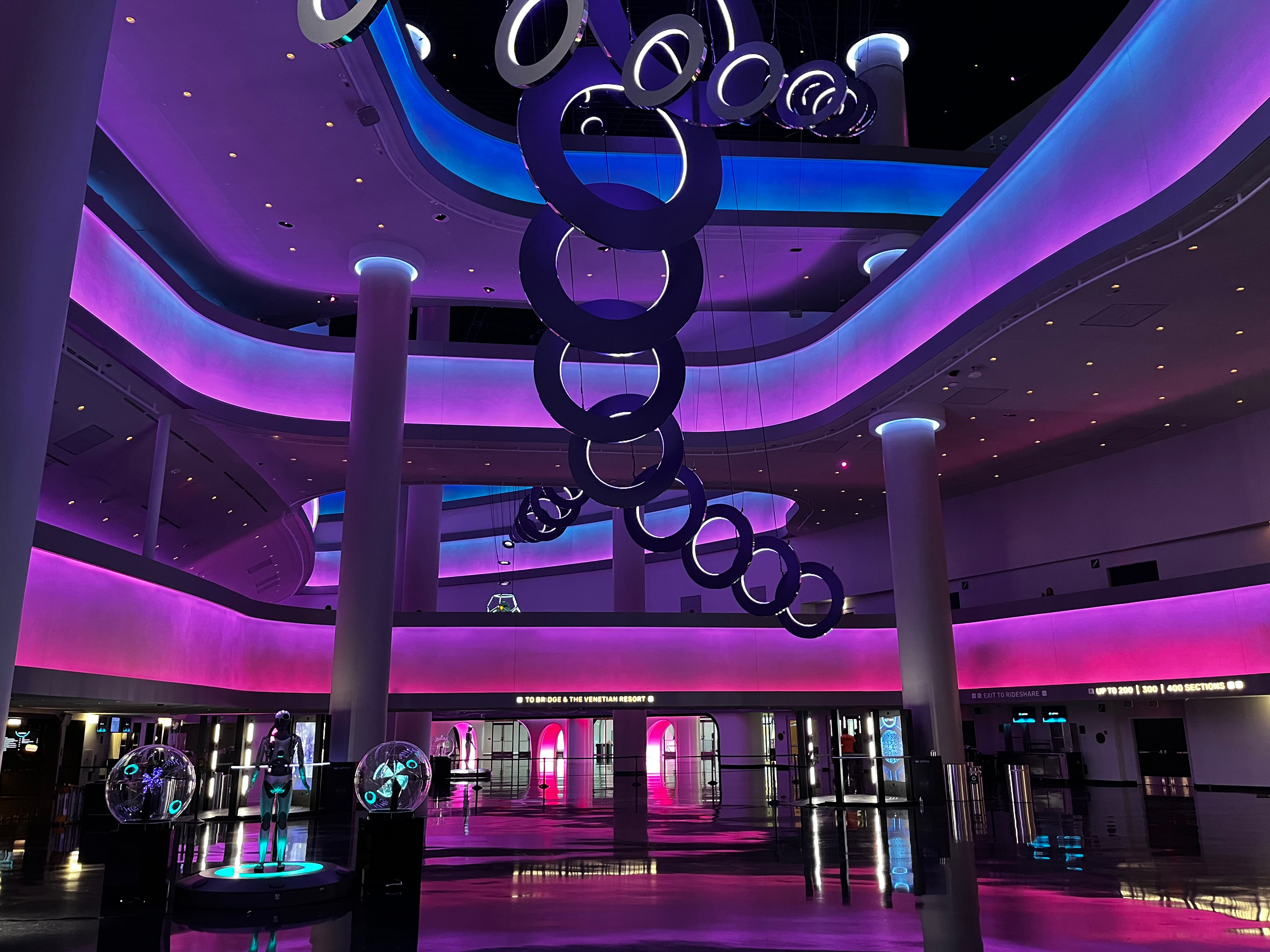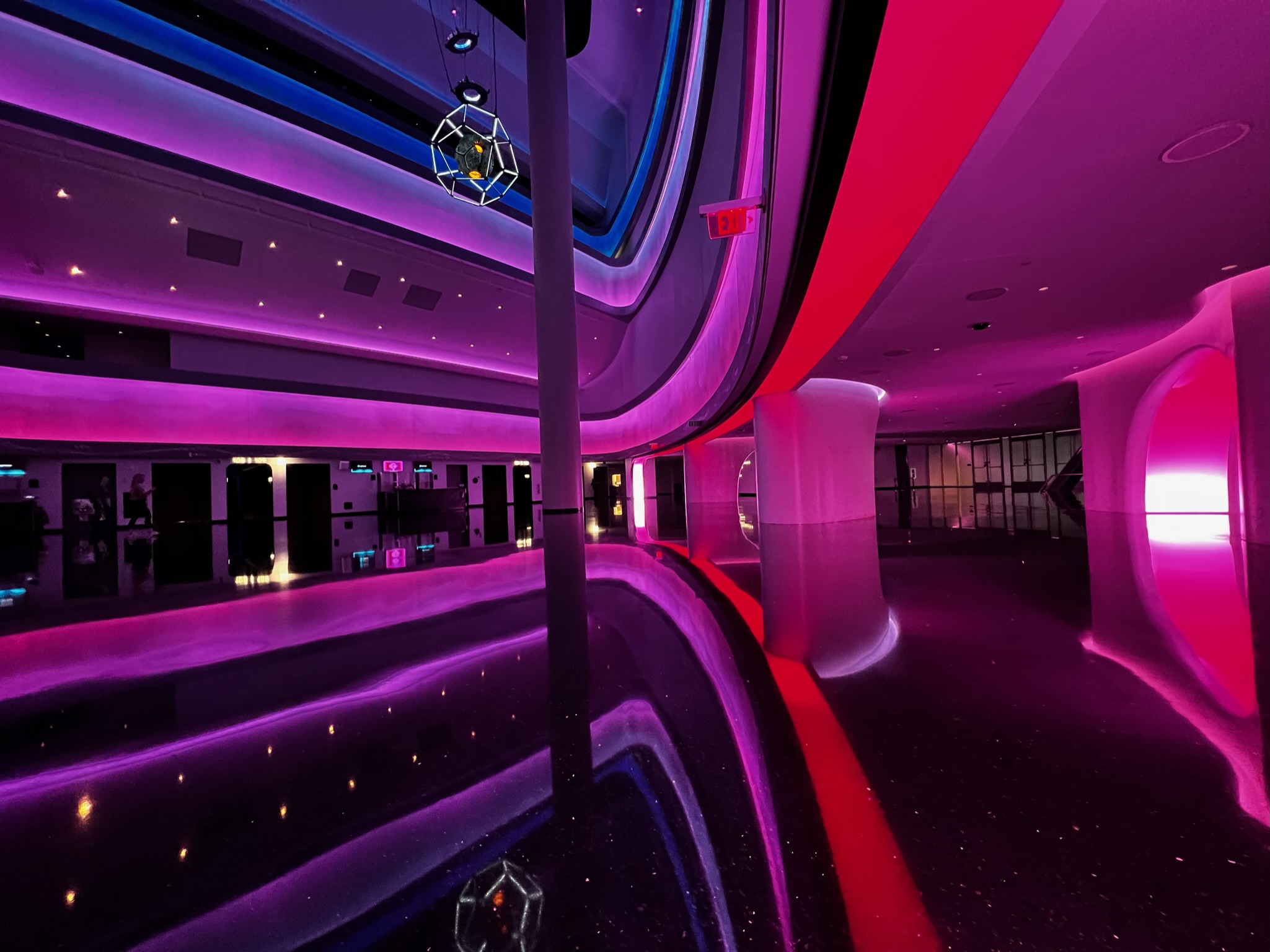Designing remarkable interiors isn’t just about picking the right lighting or the perfect finishes; it’s about balancing every aspect of a space to create an experience that adds up to more than the sum of its parts. ICRAVE calls these experiences multidimensional because they transform how people perceive, engage and interact with the world around them.
From intimate restaurants to destination hospitality spaces to a unique entertainment venue, ICRAVE’s portfolio is full of projects that reflect their commitment to multidimensional design. By determining a client’s goal and leveraging cutting-edge technology, ICRAVE’s team of designers create experiences that aren’t consumed, but lived. More than just a beautiful space, an ICRAVE experience unfolds across the physical, digital and virtual realms, creating immersive, sensory-rich journeys that ignite emotions and deepen the connections between people, brands, and culture. TRD sat down with ICRAVE Founder & CEO Lionel Ohayon and Managing Director David Taglione to learn about their design philosophy and discover the inspiration behind their most impressive recent projects.
ICRAVE’s Design Philosophy
ICRAVE’s process begins with a provocation. “The best work begins with a conversation. We want to understand the ‘why’ of your project,” explains Ohayon, who founded the firm in 2002. “It’s not a question of, ‘should this be blue or red?’ We want to know what we’re solving for, so we can help put together a strategy to effectively do that.”
“You tell your story through design,” says Taglione. “Every surface, be it digital or physical, is a medium for powerful storytelling. You’re sending a message through your decisions and the experiences that you build.”
After learning the client’s needs, ICRAVE begins crafting an immersive experience aimed at achieving the client’s business goals. While rooted in physical space, these solutions increasingly include virtual elements that complement and expand the realm of possibility. For example, ICRAVE has begun to implement digital twinning as a solution for a variety of clients, from club promoters wanting to expand the audience for a DJ set to office managers navigating an increasingly hybrid work environment.
“If you don’t have a virtual offering in your physical real estate, you’re not going to be competitive,” says Ohayon. “As a developer, it’s something you have to think about as part of your leasing model, because that’s where real estate is going.”
ICRAVE’s acquisition in 2022 by Journey represented the logical next step in the evolution of the firm’s approach to design, giving them the ability to scale up their work building and maintaining immersive environments for clients around the world. Part of that portfolio includes The Empire State Building experience, which was recently ranked as TripAdvisor’s #1 attraction in the world, and the Lift 109 Experience at Battersea Power Station in London.
In addition to leading the ICRAVE studio, Ohayon is Journey’s Co-founder and Chief Creative Officer.
A Spaceship on the Edge of the Universe
This multidimensional design approach was put to the test when the firm tackled the expansive interior at Sphere, a next generation entertainment medium in Las Vegas. ICRAVE was tasked with designing over 300,000 square feet of interior space at the global icon. The business challenge was simple in concept yet mind-boggling in its scale: design the interiors of the largest spherical structure on Earth complete with food and beverage locations, hospitality suites, expo spaces, and more, to communicate the venue’s unique character throughout and complement the groundbreaking entertainment experience.
“All of our conversations led us to the idea of limitlessness,” recalls Ohayon. “The challenge became creating the illusion of limitlessness within a defined space.”
The first choice was to remove any right angles and direct lighting from the design in order to give the illusion of spaces without horizons. From this simple decision, more design elements followed, including arched doorways and mirrored floors to create portals between areas.
“It has its own rules and dimensions,” says Taglione. “We stripped away the hard edges and really celebrated the idea of a planetary body with its own internal language.”
All of this conceptual work supports Sphere’s function as a venue capable of hosting a wide range of events. Even simple elements like the lighting cue telling people to return to their seats and Sphere’s hospitality spaces were created with the immersive concept in mind, and are customizable to create a range of experiences for guests..
“The lighting for a U2 show is different from a corporate event,” says Ohayon. “The whole space is a blank canvas that can reinvent itself for a multiplicity of immersive experiences.”
A Miami Boater’s Paradise
While designing the interiors at Sphere required an interplanetary mindset, another ICRAVE project, the Dream Hotel in Miami, is rooted in the history and culture of a very specific place.
“The focus is 600 feet of promenade and dock space for boats along the Miami River,” says Ohayon. “It’s a hospitality city center right there on the river.”

Every element of the rambunctious food and beverage destination feels like it drifted down the river and came to rest in this post-industrial area, from the tables that look like giant chunks of driftwood to exposed concrete and steel visible throughout the space.
“The idea is that you’ll want to pull your boat up to the dock with 20 of your best friends, have dinner at one of the two restaurants, head up to the nightclub, and spend the night at the hotel before the club opens back up in the morning,” explains Ohayon. “It’s not your traditional Miami project. Miami is maturing as a city, and Dream Hotel is reinventing itself for that new era.”
The Dream Hotel in Miami will feature digital twinning technology that allows guests to explore their room and the venues before booking. Taglione calls this technology the future of hospitality. “With this booking platform, you build your entire vacation prior to arriving,” he says. “It’s something people are going to expect in the future, whether it’s a hotel stay or a cruise trip.”
A Yummy Room
ICRAVE’s design ethos functions just as well on an intimate scale as it does when applied to massive entertainment venues. Their work at the 53 restaurant in MoMA was a perfect opportunity to go back to the firm’s roots and create a space that celebrated Manhattan’s revival post-COVID.
“People wanted to come back into the world and feel safe and warm,” says Ohayon. “So we wanted to create what we called a yummy room, a space where you can sit with your friends and just love being there.”
The space also takes inspiration from its MoMA setting and Asian cuisine, and is ultimately a celebration of Manhattan itself, inviting city dwellers to explore and enjoy after being cooped up in their apartments for years.

From its start over two decades ago to the Journey acquisition, ICRAVE has constantly evolved to meet the changing needs of clients from around the real estate industry. No matter the scale or business goal, ICRAVE’s memorable immersive experiences continue to lead the industry. So reach out to Journey’s Managing Director, Business Development Alexandra Polier and let ICRAVE/Journey solve your next design challenge.












